In our digital world, chatbots are everywhere. Whether it’s seeking information, understanding a process, or initiating a claim, many of us have interacted with chatbots of various capacities.
While these automated systems have made certain aspects of communication and customer service, it’s no secret that interacting with chatbots can often lead to frustration and dissatisfaction. This frustration comes from the inherent limitations of traditional rule-based chatbots, which often struggle to accurately interpret and respond to user questions, leading to irrelevant or inaccurate answers.
However, the landscape of chatbot technology is rapidly evolving, with the adoption of Artificial Intelligence (AI) the capabilities of virtual assistants to respond accurately to a wider range of scenarios have significantly improved.
This holds the promise of enabling them to emulate human-like responses and interactions, thereby addressing many of the shortcomings from conventional rule-based bots. Before diving into the potential impact of AI on chatbots functionalities, let’s first understand the motivations behind the worldwide adoption of chatbots and the challenges they currently face.
The 24/7 efficiency solution
The incorporation of chatbots into various industries is driven by several convenient factors. One of the primary advantages of chatbots lies in their continuous availability, as they operate 24/7 without the need for breaks or downtime. This round-the-clock accessibility ensures that users can receive prompt responses to their queries at any time of the day, an ability that would be unattainable with human agents alone.
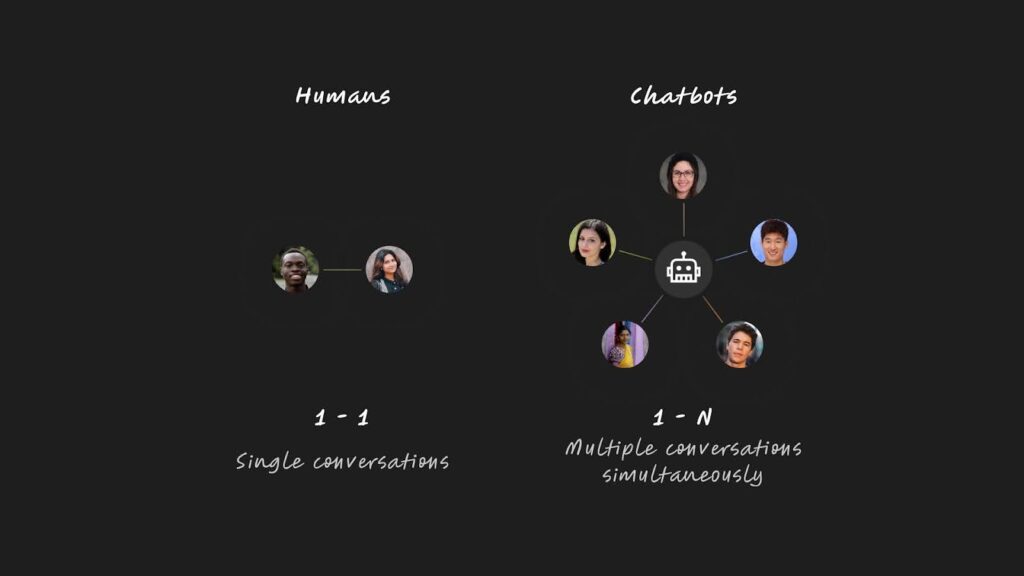
Moreover, chatbots are notoriously faster than humans: studies of various industries indicate that the average response of a chatbot is 9 seconds and with the integration of AI this number is lowering to 7 seconds average, thereby enhancing the efficiency and expediency of customer interactions.
Additionally, the capacity of chatbots to handle multiple queries simultaneously equips businesses with the ability to scale their response capabilities without the necessity of additional costs, a major advantage in today’s fast-paced and demanding consumer landscape.
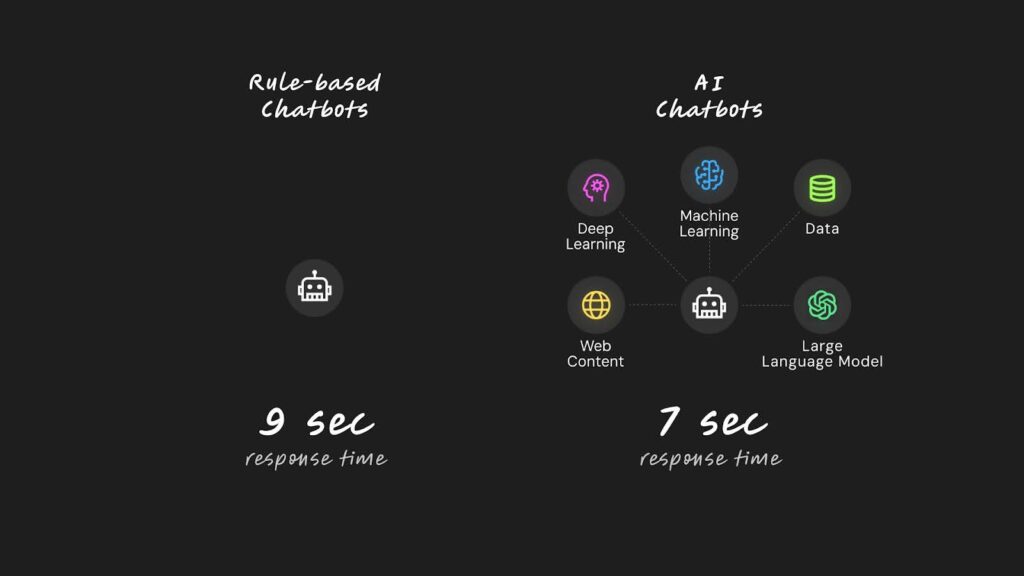
Despite these notable advantages, traditional chatbots are not without their limitations. Their proficiency is largely confined to addressing basic and straightforward queries, often faltering when confronted with complex or nuanced questions.
Additionally, the inherent constraints of rule-based virtual assistants restrict their ability to comprehend the intricacies of human language and conversation, leading to instances of inaccurate or irrelevant responses.
These limitations highlight the need for a significant change in technology, one that leverages AI to impregnate these virtual assistants with a deeper understanding of human communication and emotions.
The integration of Large Language Models
The evolution of chatbots from rule-based virtual assistants to AI-powered entities marks a significant milestone in the realm of conversational interfaces. Through the integration of Large Language Models (LLM) like GPT, chatbots are beginning to transcend their previous limitations, engaging in more meaningful and personalized interactions with users.
Understanding how LLMs work will help us understand the chatbot shift:
In LLMs, words are represented as vectors which are numerical representations of words that encapsulate semantic relationships between words. Through these representations LLMs gain the ability to discern and comprehend contextual nuances and associations of human communication, facilitating sophisticated language understandment.
LLMs are constructed upon the foundation of neural networks that are tailored to process sequential data such as text. With the power of self-attention mechanisms (a process where the LLM discerns the significance of words within a sentence) LLMs comprehend and generate coherent and relevant textual output.
One key feature of LLM is their capacity to learn from large databases. Through the utilization of unsupervised learning techniques, LLMs can discern patterns and structures without the need of manual data annotation. This predictive capacity is underpinned by the LLM’s ability to generalize from the large amount of data they have been trained on.
The realm of large language models encompasses the concept of agents where LLMs have the capacity to emulate human-like agency, making plans, decisions and striving to achieve predefined goals. Extra capacities come from access to external tools such as web search engines, calculators, and code.
The long-term memory stored in databases enables them to draw upon past experiences and knowledge to inform their decision-making processes. This leads to autonomously determining the most suitable tools and strategies to address the problems and challenges presented to them, exemplifying their capacity for nuanced and contextually informed decision-making.
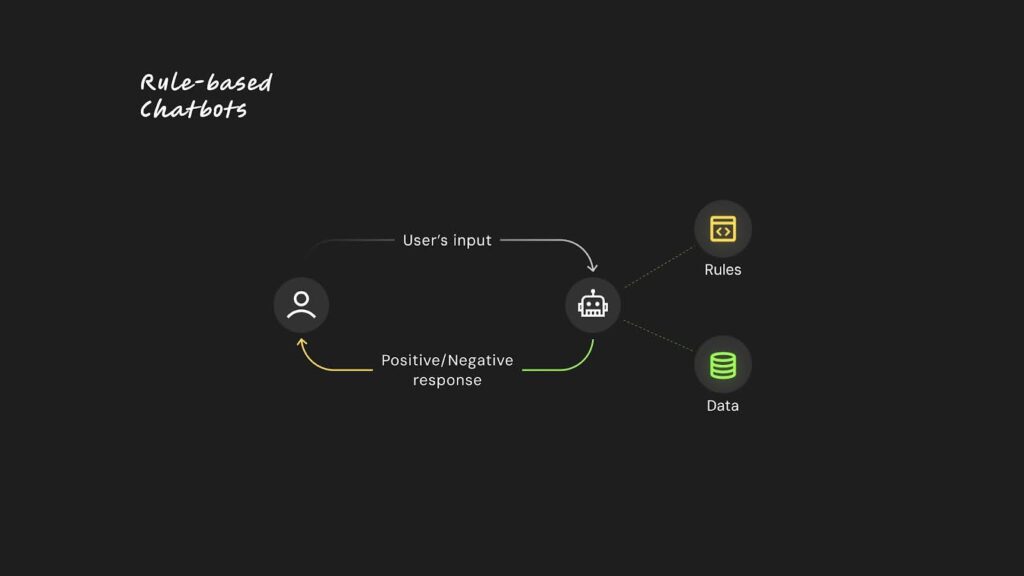
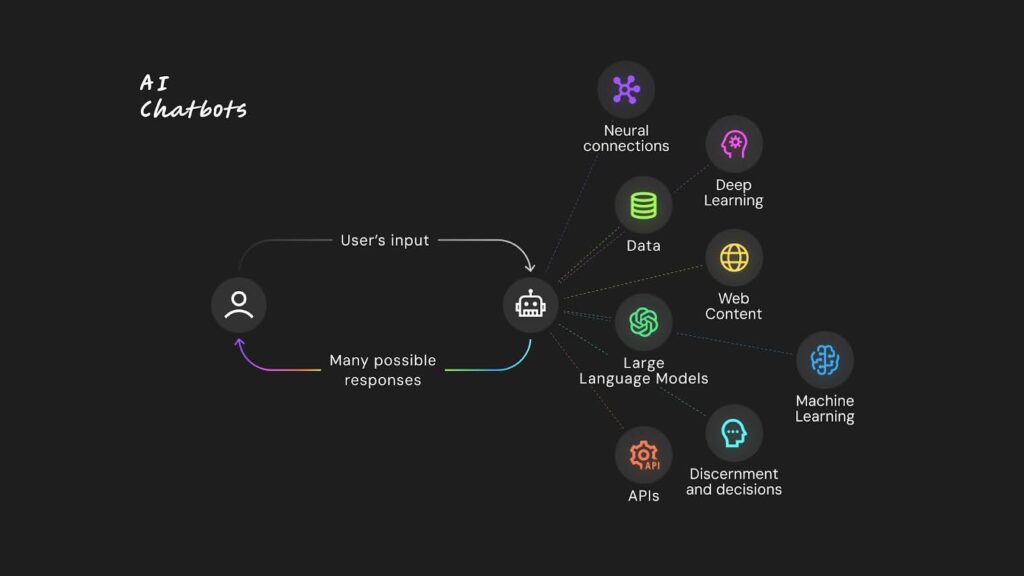
The advent of AI has enabled a great leap in the capabilities of chatbots, enabling them to discern and respond to human emotions and enabling more empathic and intuitive conversational experience. One of the most significant breakthroughs facilitated by this technology is their enhanced linguistic proficiency and multilingual capabilities.
However, it’s necessary to note that the integration of AI does not inherently guarantee flawless or human-like behavior from chatbots. The efficacy and user experience of AI-powered chatbots are directly related to meticulous User Experience (UX) design and robust machine learning algorithms.
Chatbots must be trained and fine-tuned to navigate the nuances of human interaction, enhancing them with the capacity to discern user intent, context, and emotional cues. Furthermore, the iterative refinement of machine learning models is essential to ensure that they evolve and adapt in response to user feedback and interaction patterns, thereby refining their conversational prowess over time.
There’s no great chatbot without the proper UX
The success of AI chatbots relies heavily on user experience. Evaluating the conversational flow through User experience audits, pinpointing areas of difficulty evaluating factors such as language, tone of voice and message clarity which are all essential steps in improving overall satisfaction. Through analyzing user interactions and feedback, companies can adjust their chatbots to create more seamless and engaging conversations.
These are key features to look up for during user experience audits:
Welcoming Message and User Instructions
The initial communication with the user plays a crucial role in all subsequent conversations. It establishes the chatbot’s capabilities, clarifies what it can and cannot do, and guides users on how to interact effectively. By setting clear expectations, we reduce frustration and confusion.
Response Layout
Different responses may have varying layouts. Understanding these patterns allows us to adapt our answers based on the chatbot’s output. Additionally, consider the length of descriptions, especially when providing external links or references.
Tone of Voice
Tailoring our tone to the target user is essential. Whether professional, friendly, or humorous, the right tone creates a more human-like interaction. Emojis can also enhance the conversational experience.
Response Time
Being mindful of response time helps strike a balance. Messages shouldn’t feel too abrupt or overly verbose. Adjusting the waiting messages accordingly ensures a smoother conversation.
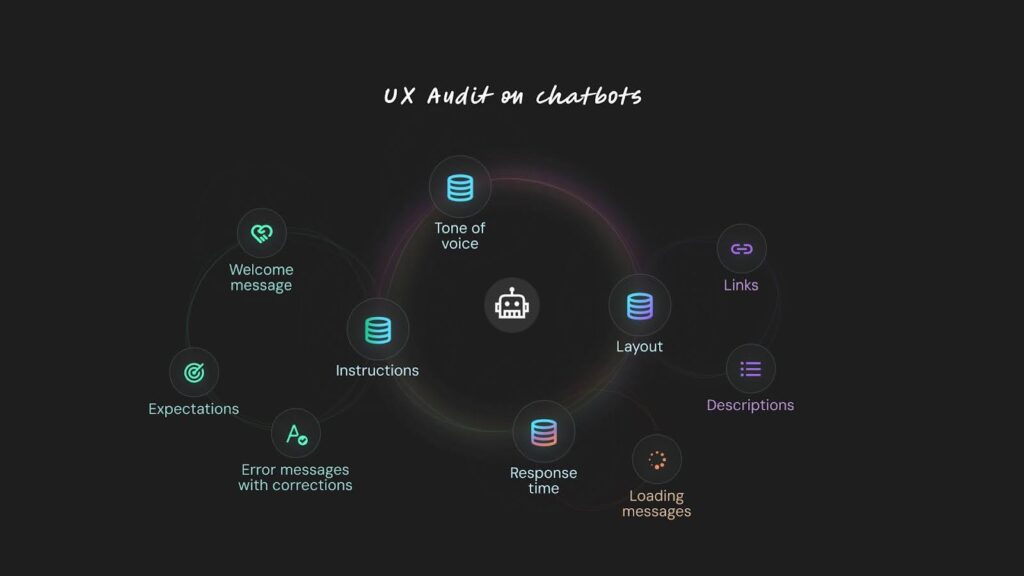
The new era of chatbots
In conclusion, the inclusion of AI in chatbots introduces a transformation in conversational interfaces, promising to bridge the gap between virtual assistants and human-like interactions. The amalgamation of artificial intelligence, machine learning, and natural language processing empowers chatbots to transcend their previous limitations, fostering more intuitive, empathetic, and linguistically adept interactions with users.
While the potential of AI in chatbots is undeniably vast, it is crucial to underscore the pivotal role of UX design and machine learning in shaping the efficacy and user experience of AI-powered chatbots. As the trajectory of chatbot technology continues to ascend, the fusion of AI and conversational interfaces holds the promise of redefining the contours of human-computer interaction, entering a new era of seamless and empathetic virtual assistants.
We can help you create and audit your chatbots to ensure a superb experience! Reach out to us at [email protected] to explore how we can work together.
